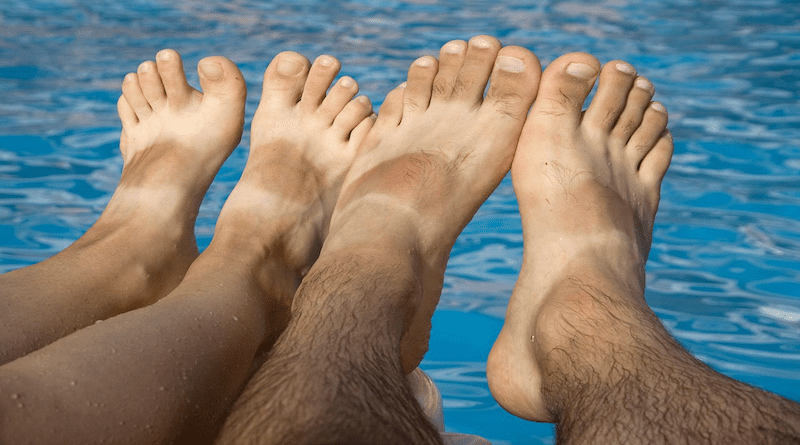‘Healthy’ Suntan Myths Persist Despite Warnings About Skin Cancer And Aging
8 in 10 Europeans believe tans are attractive with almost as many (73%) saying tans are healthy, according to a new study presented today at the 31st European Academy of Dermatology and Venereology (EADV) Congress.1
This is despite decades of awareness campaigns linking too much sun exposure to skin cancer and ageing in many countries.
Results from a survey, conducted by La Roche-Posay Laboratoires and IPSOS, of 17,000 people from 17 countries, including 6,000 people from the UK, Germany, France, Spain, Italy, and Russia, found the ‘healthy tan’ and other myths about sun safety are still very much alive in Europe and other countries.
Other myths included believing sun protection was not needed in cloudy weather and that you did not need sunscreen if you already had a tan.
People surveyed from non-European countries, including North and South America, Africa, Oceania, and Asia, were slightly less enthusiastic about suntans than Europeans, with 67% saying a tan was attractive and 59% believing a tan was healthy.
Although 92% of Europeans were aware of the skin ageing risks posed by the sun (86% outside of Europe), 84% of them admitted they did not protect themselves all year round (79% outside of Europe).
Commenting on the findings, lead researcher Prof. Thierry Passeron stated: “This research shows just how entrenched the “healthy” suntan myth is – even in those who have already suffered sun damage or developed skin cancer.”
“We must drive awareness of the damage to skin cells caused by exposure to the sun, which can lead to photoaging and skin cancer. This is particularly important in Europe where sun protection appears most inadequate compared to other countries” added Prof. Thierry Passeron.
The survey also revealed that only 56% of Europeans know sun protection is useful when the weather is overcast (vs 64% outside of Europe), and 1 in 4 (24%) thought it was safe to go outside without sun protection when they were already tanned (vs 21% outside of Europe).
Only 1 in 10 (10%) of Europeans said they routinely or often used all forms of sun protection, such as applying sunscreen, staying in the shade, wearing a hat and protective clothing all year round, compared to 14% amongst those outside of Europe.
“The public must also understand that they need to protect their skin all year round, even during overcast weather conditions. Once sunscreen has been applied, it must be reapplied every 2 hours to ensure sufficient protection. Other measures such as wearing sunglasses, a hat, and protective clothing, and seeking shade when it is possible, are also key photoprotection habits”, commented Prof. Thierry Passeron.
According to latest estimates about 1.7% of adults in Europe have skin cancer (around 7.3 million people).2 Ultraviolet (UV) sun exposure is also responsible for more than 80% of visible photoaging signs, such as lines and wrinkles.3
Other findings from the study include:
- Just over half of Europeans (51%) said they were likely to wear a hat routinely or often, compared to 57% outside Europe.
- When it comes to staying in the shade (73%) of Europeans said they did so routinely or often, compared to 80% of those outside Europe.
- A second analysis by the team found awareness of the dangers of the sun were higher in at-risk* groups of people. But 59% of this group said they could not imagine coming back from a holiday without a tan, compared to 48% of those without a medical history.
- 62% of Europeans and 52% of non-Europeans applied sunscreen routinely or often, especially on their arms, legs, and chest. But 10% of Europeans said they never used suncream at all, compared to 16% outside Europe. Of those who applied sunscreen in the sun – 34% applied it only once a day, compared to 49% outside Europe.
- 90% of those in at-risk groups said they were aware of the risks the sun posed to their skin, yet 72% still regarded a tan as healthy, which is higher than those who had no history of skin cancer or other sun-exposure related skin conditions (62%). Additionally, of those who said they applied sunscreen in at-risk groups, only 1 in 4 (26%) applied it every 2 hours or more often than is recommended.
*These were defined as those with a history of skin cancer, pre-cancerous lesions, photo dermatosis, or those taking photosensitising or immunosuppressing drugs.
This survey was conducted by La Roche-Posay and IPSOS, in collaboration with 12 international experts in photoprotection to better understand the gaps in photoprotection education and prevention.
References
- Sun Exposure and Associated Risks in 17 Countries: Results from Europe Compared to Other Continents, presented at EADV Congress 2022
- https://eadvsymposium2022.org/over-seven-million-europeans-estimated-to-have-skin-cancer/#:~:text=Results%20of%20a%20new%20European,estimated%20to%20have%20the%20disease.
- https://www.ncbi.nlm.nih.gov/pmc/articles/PMC3790843/

